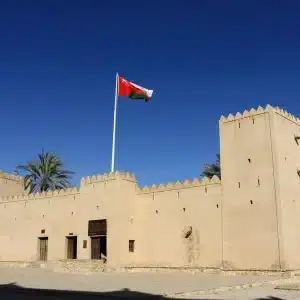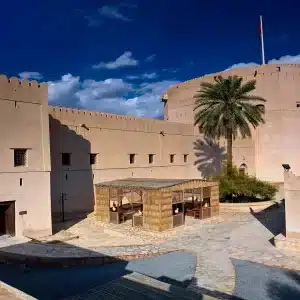Oman Historical Tours: 15 Timeless Journeys Through the Sultanate’s Glorious Past
Step into Oman’s legacy with historical tours that trace every stone, fort, and market back to a rich and resilient civilization.
Oman Historical Tours
Oman historical tours are more than a series of museum stops or ancient ruins—they are immersive journeys into a civilization carved by trade winds, tribal wisdom, and Islamic scholarship. These tours connect the present to a past that spans over 5,000 years.
From the sun-baked bastions of Bahla to the scholarly halls of Jabreen Castle, Oman’s historical sites tell tales of resilience, wisdom, and architectural mastery. Having walked the cobbled paths of Muttrah, stood in the shadow of towering forts, and explored ancient incense routes in Dhofar, I can confirm that Oman’s history is alive, well-preserved, and proudly shared with every traveler who seeks to understand it.
Ancient History and Civilizations in Oman
Oman’s historical significance stems from its role as a maritime power and incense exporter. Key historical phases include:
Pre-Islamic era: Bronze Age towers and tombs
Maritime dominance: Indian Ocean trade, dhow building, and ports
Islamic sultanate: Fortification, law, and religion flourished
Portuguese occupation (16th century): Naval conflict and architectural influence
Oman was once a global player stretching from Zanzibar to Baluchistan—and its ruins and records reflect that reach.
UNESCO World Heritage Sites in Oman
Oman boasts several UNESCO-listed sites that form the backbone of historical tours:
Bahla Fort – A massive mud-brick structure guarding the desert’s edge
Aflaj Irrigation Systems – Ingenious water channels still in use
Bat, Al-Khutm, and Al-Ayn Tombs – Prehistoric beehive graves
Land of Frankincense (Salalah) – Ports and caravan routes linked to ancient incense trade
Guided tours at these sites offer context, storytelling, and local legends.

Best Time for Oman Historical Tours
To fully appreciate the depth and atmosphere of Oman’s historical landmarks, timing is essential:
October to April: Cool and comfortable weather for walking tours and open-air forts
Ramadan and Eid: Unique insights into cultural traditions and religious heritage
Salalah’s Khareef Season (July–September): Best for visiting incense-era ruins in misty settings
Guided tours are available year-round, but planning your visit during cultural events enhances the experience.
Muscat Historical Walking Tours
The capital is rich in historical treasures and offers accessible tours covering:
Sultan’s Palace (Al Alam) and Portuguese-era forts
Sultan Qaboos Grand Mosque – A stunning mix of Islamic design and Omani craftsmanship
Bait Al Zubair Museum – Cultural exhibits, antique weapons, and royal regalia
National Museum of Oman – Interactive exhibits on Oman’s entire historical arc
Walking tours often start at Muttrah Corniche, combining heritage and shopping.
Old Muttrah and the Corniche Tour
Muttrah is a port town steeped in maritime legacy:
Muttrah Fort – A watchtower with views over the harbor
Muttrah Souq – One of the oldest markets in the Gulf
Fish market and dhow harbor – Living traditions passed through generations
This tour connects Oman’s historical sea trade with its modern identity.
Nizwa Fort and Souq Historical Tour
Nizwa was once Oman’s intellectual and political hub:
Nizwa Fort – Built in the 17th century with one of the largest towers in the Middle East
Traditional souq – Known for silver khanjars, dates, and pottery
Cultural performances during weekends and festivals
Guided tours here highlight tribal unity, religious scholarship, and defensive architecture.
Bahla Fort and Oasis Tour
Step into myth and history:
Bahla Fort – Oman’s only UNESCO-listed fort, with legends of magic
Surrounding oasis – Date palms, falaj water systems, and mudbrick homes
Pottery-making workshops – A craft passed down for centuries
This tour feels like a step into a storybook from Arabian folklore.
Jabreen Castle Heritage Tour
Unlike military forts, Jabreen was built as a center of learning and elegance:
Intricate ceilings with calligraphy and murals
Wind towers, secret passageways, and Islamic astrolabes
Insight into Oman’s academic and spiritual golden age
It’s a must for travelers interested in Omani art and science.
Guided vs. Self-Guided Historical Tours
Both touring styles offer unique advantages:
Guided Historical Tours
Provide expert interpretation and storytelling
Offer insider access to areas off-limits to solo visitors
Eliminate navigation stress, especially in remote or complex sites
Self-Guided Historical Tours
Offer flexibility and privacy
Ideal for repeated visits or slow-paced exploration
Best for well-marked sites like Muttrah, Nizwa, or the National Museum
Choose based on your interest level, travel goals, and group size.
Family-Friendly Historical Itineraries
Oman’s past comes alive for all ages:
Interactive museum exhibits and dress-up corners
Forts with maze-like towers and secret tunnels
Traditional markets with sweets, music, and animal auctions
Storytelling sessions or cultural demonstrations tailored for children
These family tours are engaging, educational, and safe for younger travelers.
Photography Tips for Historical Tours
Capture Oman’s soul with:
Golden hour visits for rich lighting at forts and villages
Use wide-angle lenses for castles and interiors
Respect religious sites—ask before photographing people
Capture details like doors, lanterns, and calligraphy
Drone use may require a permit—check with your guide or hotel in advance.
Luxury and Private Historical Tour Packages
For discerning travelers, Oman offers exclusive heritage access:
Private guides and translators
Access to closed historical estates and collections
Curated itineraries combining history, nature, and dining
Luxury stays in heritage-style resorts like The Chedi Muscat or Anantara Al Jabal Al Akhdar
These tailored experiences offer immersion with elegance and privacy.
Top Historical Tour Operators in Oman
Reputable providers include:
Oman Day Tours – Expert guides and flexible packages
Zahara Tours – Known for cultural accuracy and depth
Arabian Experience – Custom heritage tours with elite access
Beautiful Salalah Tours – Specializes in Dhofar and incense heritage
Check for certifications and recent guest reviews when booking.
FAQs About Oman Historical Tours
Are historical tours available in English?
Yes, most major operators offer English-speaking guides.
Is there an entry fee for forts and museums?
Yes, typically 1–5 OMR; some UNESCO sites may charge more.
Can historical tours be done in one day?
Many sites are grouped into full-day packages; multi-day options cover more ground.
Are tours accessible for people with limited mobility?
Some museums are accessible, but older forts often include stairs and uneven ground.
Is photography allowed during tours?
Yes, except in some religious or royal areas. Always ask your guide.
Conclusion: Why Oman’s History Still Matters Today
Oman historical tours are not simply about bricks and bones—they are emotional reconnections to a proud, peaceful, and poetic legacy. These places are still part of the living soul of the country, shaping the values of today’s Omani society.
From timeless forts and fragrant markets to wise elders and sacred stories, the past here is tangible—and waiting for you to walk through its pages.
Link Suggestions:







Comment (0)